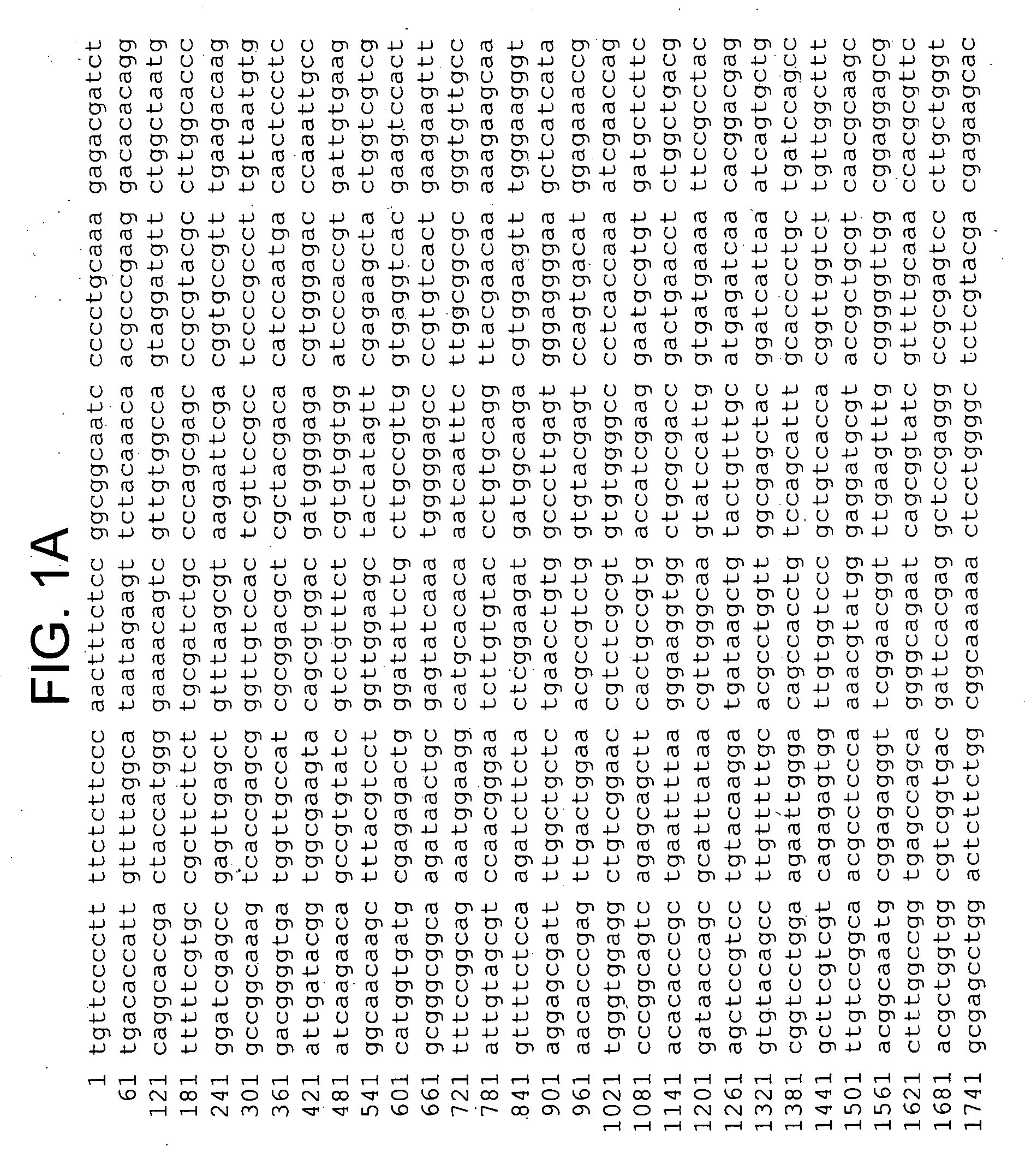T. cruzi-derived neurotrophic agents and methods of use therefor
a neurotrophic agent and cruzi technology, applied in the field of t . cruzi-derived neurotrophic agents and methods of use therefor, can solve the problems of cardiac and gastrointestinal (gi) morbidity and mortality in millions of people, and the inability to safely administer neurotrophic factors to mammals is severely limited
- Summary
- Abstract
- Description
- Claims
- Application Information
AI Technical Summary
Benefits of technology
Problems solved by technology
Method used
Image
Examples
example 1
TS and Peptides Derived From TS Promote Survival of Neurons
Materials and Methods
Growth Factors, Cytokines, and Synthetic Peptides
[0100] Mouse 7S nerve growth factor (NGF) was purchased from Collaborative Biomedical Products (Bedford, Mass.); human ciliary neurotrophic factor (CNTF) was a gift of Dr. E. Granowitz (New England Medical Center, Boston, Mass.); and recombinant human and rat CNTF, as well as the neuraminidases from V. cholera, C. perfringens, and Newcastle disease virus, were from Calbiochem. Recombinant human IL-11, leukemia inhibitory factor (LIF), and oncostatin-M were from Sigma (St. Louis, Mo.), while recombinant human IL-6 was from Endogen. Synthetic peptides were made at the Tufts Biotechnology Center (Tufts University, Boston, Mass.). The peptides were dissolved in RPMI / 0.2% BSA prior to the neuronal assays.
Purification of TS
[0101] TS was purified by immuno-affinity chromatography as described previously (Scudder et al., J. Biol. Chem. 268: 9886-9891 (1993...
example 2
T. cruzi Infection, TS and Peptides Derived from TS Promote Survival of Human Schwann Cells
[0142] The following materials and methods were used:
Cell Culture
[0143] Immortalized human Schwann cells (Rambukkana, A. et al., Science, 282:2076-2079 (1998)) were maintained in DMEM supplemented with 10% FCS, 0.5 mM pyruvate Na (Gibco) and 0.1 mM nonessential amino acids. Vero cell monolayers were grown at 37° C. in DMEM with 2.5% FCS, 100 U / ml penicillin and 100 μg / ml streptomycin in humidified chambers, as previously described (Pereira, M. E. A. et al., Infect. Immun., 64:2884-3892 (1996)).
Parasites
[0144]T. cruzi trypomastigotes, Silvio strain, were maintained in Vero cell cultures, as described earlier (Pereira, M. E. A. et al., Infect. Immun., 64:2884-3892 (1996)). Trypomastigotes were collected 5 days after the start of infection and immediately used to infect Schwann cells. T. cruzi epimastigotes were grown in acellular LIT medium at 26° C. for 5-10 days (Saavedra, E. et al., J....
example 3
TS and Peptides Derived from the Tandem-Repeat Domain of TS Induces the Secretion of IL-6
Additional Materials and Methods
Cell Culture
[0176] Primary cultures of human intestinal microvascular endothelial cells (HIMEC) isolated from normal jejunal mucosa / submucosal tissue were prepared as described (Strong et al., Gastroenterology 114: 1244-1256 (1998)). The HIMEC were cultured in fibronectin-coated plasticware in MCDB medium (Sigma) supplemented with 20% FBS, 90 μg / ml heparin and 50 μg / ml endothelial cell growth factor (Sigma). T-24 cells (ATCC Accession No. HTB-4) were cultured in M199 medium supplemented with 10% FBS. PBMC were purified by Ficoll-Paque gradient as described (Current Protocols in Immunology, pp 7.1.1-7.1.2). Vero cells (ATCC Accession No. CCL-81) were grown in RPMI medium with 5% Nu serum and infected with the Silvio X-10 / 4 of T. cruzi as described previously (Chuenkova et al., J. Exp. Med. 181: 1693-1703, (1995)).
Cloning and Expression of Catalytic and Long ...
PUM
| Property | Measurement | Unit |
|---|---|---|
| concentration | aaaaa | aaaaa |
| length | aaaaa | aaaaa |
| MW | aaaaa | aaaaa |
Abstract
Description
Claims
Application Information
 Login to View More
Login to View More - R&D
- Intellectual Property
- Life Sciences
- Materials
- Tech Scout
- Unparalleled Data Quality
- Higher Quality Content
- 60% Fewer Hallucinations
Browse by: Latest US Patents, China's latest patents, Technical Efficacy Thesaurus, Application Domain, Technology Topic, Popular Technical Reports.
© 2025 PatSnap. All rights reserved.Legal|Privacy policy|Modern Slavery Act Transparency Statement|Sitemap|About US| Contact US: help@patsnap.com



